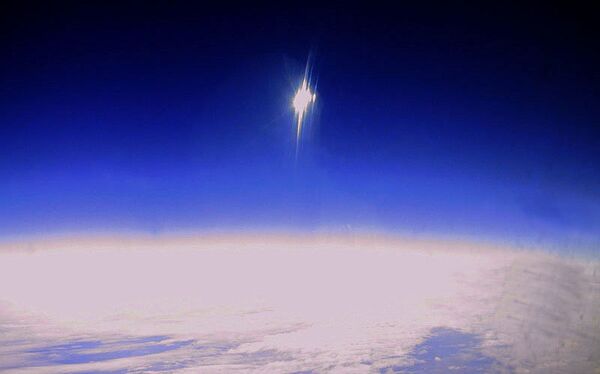MOSCOW, September 16 (RIA Novosti) – International Day for the Preservation of the Ozone Layer, celebrated on September 16, is marked this year under the theme "Ozone Layer Protection: The Mission Goes On" and is focused on the remaining challenges in the process of phasing out ozone-depleting substances.
In 1994, the UN General Assembly proclaimed September 16 International Day for the Preservation of the Ozone Layer to commemorate the date the Montreal Protocol on Substances that Deplete the Ozone Layer was signed in 1987.
A dramatic decrease in the concentration of stratospheric ozone, the "ozone hole," was first discovered over Antarctica in the 1980s. Today, experts believe that the depletion of ozone (triatomic oxygen molecules) is caused by exposure to chlorofluorocarbons (CFCs), better known as freons.
Scientific confirmation of the depletion of the ozone layer prompted the international community to establish a cooperation mechanism to protect it. This cooperation mechanism was enshrined in the Vienna Convention for the Protection of the Ozone Layer, which was adopted and signed by 28 countries on March 22, 1985. The Soviet Union joined the convention in 1986.
The Vienna Convention for the Protection of the Ozone Layer is a framework agreement, which does not impose any specific obligations on its signatories to reduce the production and consumption of ozone depleting substances (ODS).
The Montreal Protocol on Substances that Deplete the Ozone Layer was signed by 197 states as of April 2014. The Soviet Union signed the protocol in 1987 and ratified it in 1988.
To join the Montreal Protocol on Substances that Deplete the Ozone Layer, a state must be part of the Vienna Convention.
The Montreal Protocol's main objective is to protect the ozone layer by limiting global production and consumption of ozone depleting substances, and ultimately completely eliminating them.
The Montreal Protocol controls close to 100 chemical substances in several categories. For each group of chemicals a timetable has been set up to phase out their production and consumption.
The production of chlorofluorocarbons (CFCs) was completely discontinued in 1996, while the production of hydrochlorofluorocarbons (HCFCs) is in the process of being phased out.
The phase-out schedule for HCFCs was introduced in 1992. It requires developed and developing nations to establish a moratorium on HCFC production in 2015, and sets a complete phase-out deadline for 2030 and 2040 for developed and developing nations, respectively. In 2007, the signatory states decided to accelerate the phase-out process.
In Russia, the production of ozone depleting substances reached its maximum level in 1990, with about 58.8 percent (47,575 metric tons) of the total output being used within the country. In 1996, the proportion of the output used domestically was 32.4 percent, or about 15,408 metric tons. The remaining amount was exported to CIS countries and elsewhere in the world.
In Russia, ODS are mostly used in the production of aerosols (46 percent), refrigerating equipment (household, commercial, and industrial) and air conditioners (27 percent), plastics (11 percent), fire-fighting equipment (14 percent), and equipment using as solvents (two percent).
Since January 1, 2010, the ODS consumption level allowed in accordance with Russia's international obligations has decreased threefold compared with the level allowed in 2004-2009.
A 2014 study prepared by the United Nations Environment Program (UNEP) and the World Meteorological Organization (WMO) revealed that the phase-out of a number of chemicals will result in the recovery of the ozone layer within a few decades.
UNEP experts believe that a proper implementation of the Montreal Protocol will help prevent 2 million cases of skin cancer by 2030. They also note that phasing out ozone depleting substances helps prevent climate change, as many of the chemicals controlled under the treaty have been recognized as sources of global warming.
The UN has proposed to devote International Day for the Preservation of the Ozone Layer to promoting activities in accordance with the objectives of the Montreal Protocol.
Traditionally, activities promoting ozone layer awareness across the world include speeches by government officials and scientists, segments on various TV and radio shows, newspaper and magazine articles, website presentations and numerous seminars for school and university students.
Authorities throughout the world distribute promotional materials advancing the cause of ozone layer protection, including environmentally friendly reusable bags, souvenirs with the emblem and logo of International Day for the Preservation of the Ozone Layer, various posters, and other materials.
A lot of attention is paid to raising awareness among young people, starting in elementary school. Activities for children to celebrate the holiday include contests for the best poster, slogan, or essay dedicated to International Day for the Preservation of the Ozone Layer. In many countries children are also encouraged to express their views through other creative outlets, from dance to theatrical performance.




